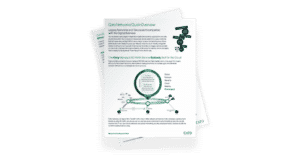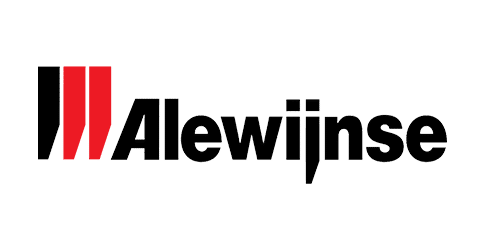
Bugaboo Transforms its Network with Cato, Boosting Cloud and Datacenter Application Performance
Bugaboo Transforms its Network with Cato, Boosting Cloud and Datacenter Application Performance The Challenge: Slash Network Complexity and Cost
Global manufacturers need fast, secure WAN connections among datacenters, manufacturing plants, sales offices, and the cloud to provide a positive customer experience and compete successfully with fast-moving competitors. Many have relied on global MPLS networks, which are expensive--particularly in the Asia Pacific region--and not always reliable. And still others are relying increasingly on cloud applications, which are ill-suited for legacy networks based on MPLS.
Such was the case with Bugaboo, a well-known innovative Dutch designer and manufacturer of baby strollers and parenting solutions. Bugaboo had a datacenter and main office in Amsterdam, a manufacturing plant in Xiamen China, and offices and retailers throughout the EU, North America, Australia, and Asia Pacific.
When Rein Droog joined as Vice President, Global IT for Bugaboo in 2019, the company was suffering from WAN and infrastructure complexity. The network had emerged organically, requiring internal technology experts to keep humming. At the time, ERP and other applications were running in the Amsterdam datacenter, connected to global locations either via MPLS or, in the case of the smallest locations, Internet VPNs. “We had somewhere between 10 or 20 different contracts with local providers,” says Droog.
“In Asia the MPLS is much more expensive than in Europe. What’s more, IT staff had to fly all over the world to bring up even small, 10-person offices."
Not only was the WAN infrastructure complex, it was also expensive. “In Asia the MPLS is much more expensive than in Europe,” says Droog. What’s more, IT staff had to fly all over the world to bring up even small, 10-person offices, he says.
Security was also varied and highly distributed among locations. “There had been little to no centralized monitoring or management, which complicated policy configuration and enforcement,” he says.
“With all of that expensive MPLS, our China locations still had performance, latency, and downtime issues when connecting to applications in the Amsterdam datacenter. The whole setup was just not economical, and with all the expertise in a few IT staff, not sustainable.”
With all this complexity and expense, WAN performance and stability were constant issues. “One month Japan was down, the next month Australia,” says Droog. “With all of that expensive MPLS, our China locations still had performance, latency, and downtime issues when connecting to applications in the Amsterdam datacenter. The whole setup was just not economical, and with all the expertise in a few IT staff, not sustainable.”
Bugaboo also sought to kickstart a major digital transformation, which included a “Cloud Unless” policy that mandated moving applications to the cloud whenever it made business sense. MPLS was clearly not the strategic solution.
With IPknowledge, Bugaboo Embarks on Total Network Transformation
Droog started soliciting feedback from leadership, users, and IT to start building a digital transformation strategy. “All kinds of unfiltered feedback was collected, from the good to the bad,” says Droog. “From Virtual meetings not going smoothly, to latency issues or bad application performance. Some things were working, however, so my task was to find the root cause of the issues we were having and fix it.”
Droog drafted a technology transformation roadmap with three major objectives:
Fix the foundation, which included hosting and networking, site infrastructure, user and meeting services and security.
Improve the application layer by rationalization and simplification.
Improve the data reporting and advanced analytics capability by focusing on ownership, quality and tooling.
“We looked at the network and site infrastructure as one of the first,” says Droog.
To fix the foundation, Droog turned to longtime IT partner IPknowledge, a Dutch provider of Internet access and cloud-native connectivity and security to enterprises like Bugaboo. IPknowledge had already been working with Bugaboo to enhance the existing WAN infrastructure with WAN optimization solutions. In this case, Droog wanted IPknowledge to help him transform the network.
“I wanted one reliable partner, not 20 different contracts, and I didn’t want our folks having to deal with 24 X 7 monitoring. The solution had to be simple and sustainable, and it had to just work.”
“We had a lot of discussions on how to set up a flexible network that could deal with the number of users we had in our office locations,” says Droog. “I wanted one reliable partner, not 20 different contracts, and I didn’t want our folks having to deal with 24 X 7 monitoring. The solution had to be simple and sustainable, and it had to just work.”
Droog wanted to be able to open--and close--offices quickly and easily if necessary, a key requirement of rapid company transformation. “We were changing quickly, and it was difficult to know what was coming in the next three months.”
Cato connects all global enterprise network resources — including branch locations, mobile users, and physical and cloud datacenters — into a single secure, global, cloud-native network service. With all WAN and Internet traffic consolidated in the cloud, Cato applies a suite of robust security services to protect all traffic, including anti-malware, next-generation firewall, content filtering, and IPS.
Connecting a location to Cato is just a matter of installing a simple preconfigured Cato Socket appliance, which links automatically to the nearest of Cato’s more than 65 globally dispersed PoPs. At the local PoP, Cato provides an onramp to its global backbone and security services. The backbone is not only privately managed for zero packet loss and 5 9’s uptime, it also has built-in WAN optimization to dramatically improve throughput. Cato monitors network traffic and selects the optimum path for each packet across the Cato backbone. Mobile and home users run across the same backbone, benefiting from the same optimization features and improving remote access performance.
Droog tested several solutions, including Cato. Bugaboo had just switched to Office 365 and Cato worked the best with the service, particularly in China. “Our overall internal network performance also improved with Cato and the performance of our Amsterdam-based applications in China improved significantly.”
Network Complexity to Simplicity with Cato and IPknowledge
“Cato really is plug and play. It was clear that Cato’s flexibility actually made switching to Cato less risky than staying with the solution we already had.”
Setting up the tests was remarkably easy. “That’s one of the things that drew me to the Cato solution,” says Droog. “Cato really is plug and play. It was clear that Cato’s flexibility actually made switching to Cato less risky than staying with the solution we already had.”
Rolling out Cato to the other locations over a month was also quick and painless. “There was zero downtime during the rollout,” says Droog. “We just shipped the Cato Socket to each office and walked whoever was there, even a salesperson, through how to plug it in.” No IT travel required.
When Covid-19 hit, Bugaboo sent everyone home to use its existing remote access solution but switched gradually to Cato between November 2020 and January 2021. Once remote access moved to Cato, performance for all those work-from-home users improved in Asia and North America as well. “We heard a lot of home users say, ‘Hey, this runs much faster!” says Droog.
“With Cato the performance with the cloud was faster than connecting to the cloud directly,”
And finally, cloud applications also ran faster under Cato. “With Cato the performance with the cloud was faster than connecting to the cloud directly,” says Droog.
As for security and management, Bugaboo has its own security monitoring tools and policies, but Cato provides the firewall, antimalware, and IPS capabilities in the cloud. IPknowledge also has its own management and monitoring tools to manage the Bugaboo Cato deployment but hooks into Cato’s management system using the Cato API.
“Cato’s management portal takes care of a lot of mundane tasks that we had to handle ourselves before,” says Steven de Graaf, managing director of IPknowledge. “With Cato we can be proactive and spend time on architectural improvements instead of configuring and fixing firewall rules. Cato lets us compete with the big telcos and provide a better solution, which is why it has become our principal strategic partner.”
“Monitoring and maintenance have improved a lot with Cato and IPknowledge,” says Droog. “And where there were hiccups every month with our previous infrastructure, Cato has been absolutely stable, fast, and available.”





